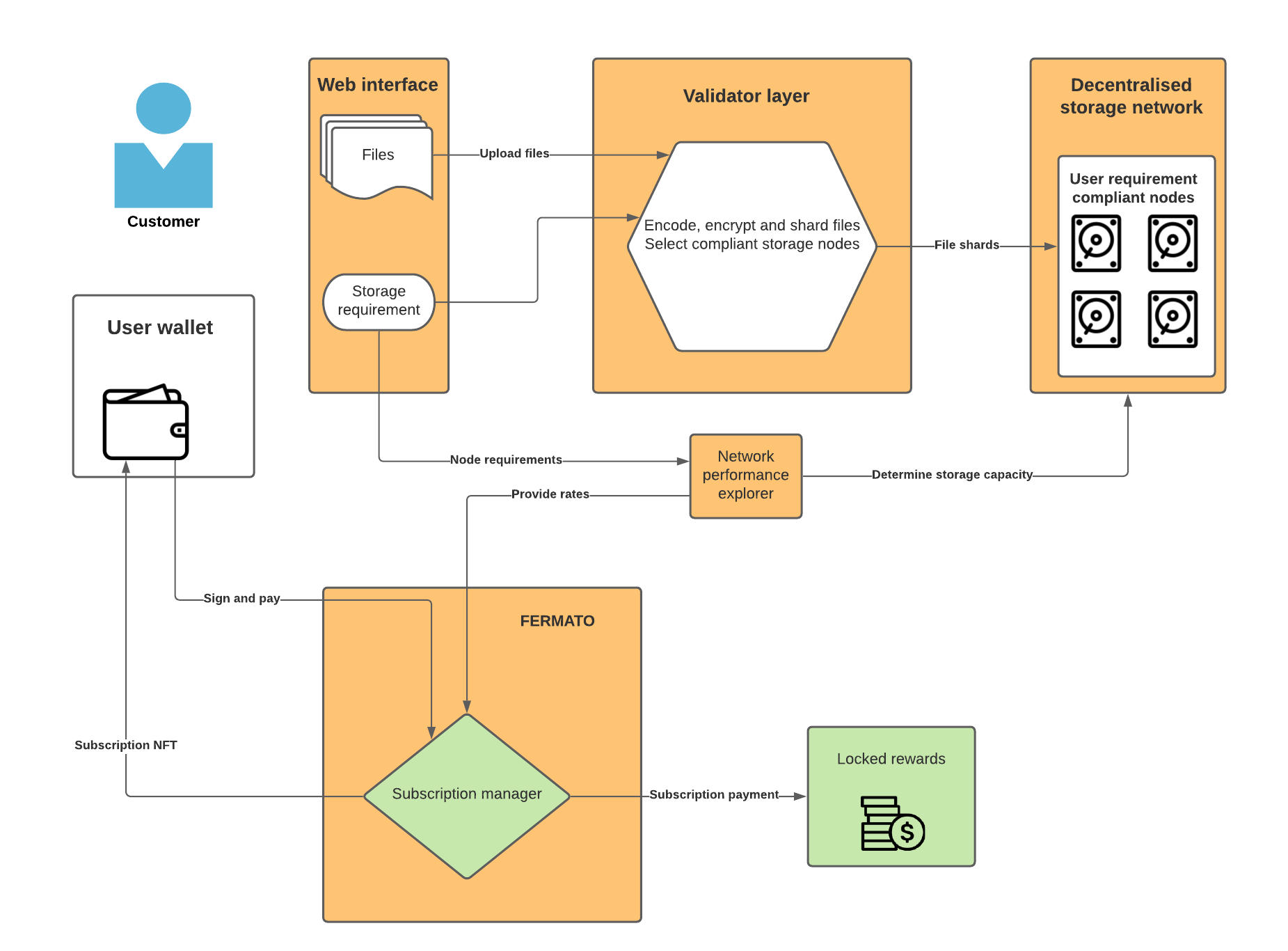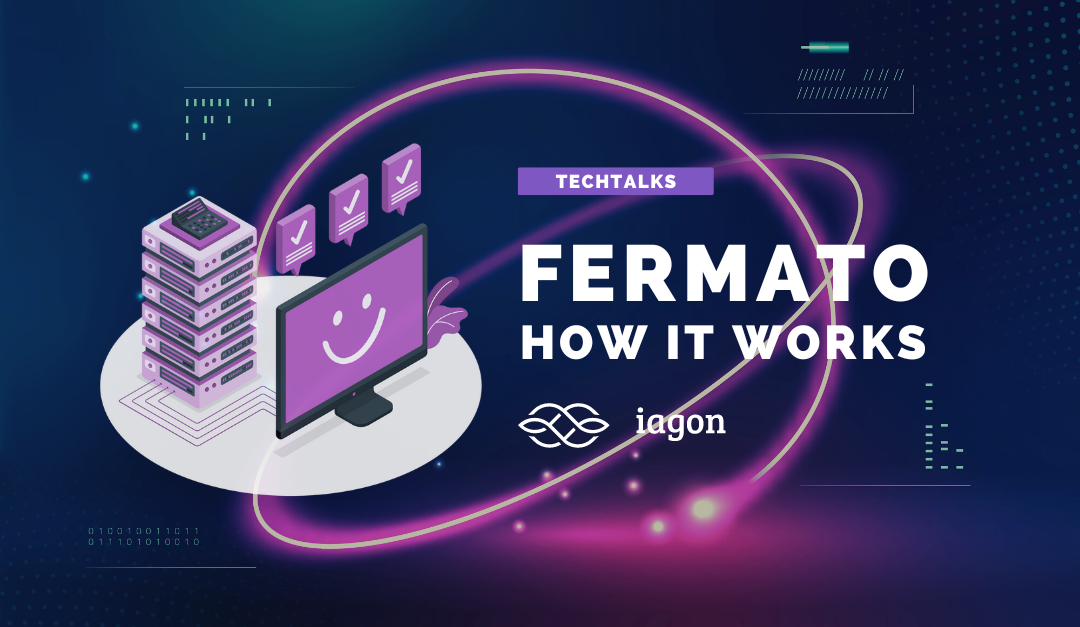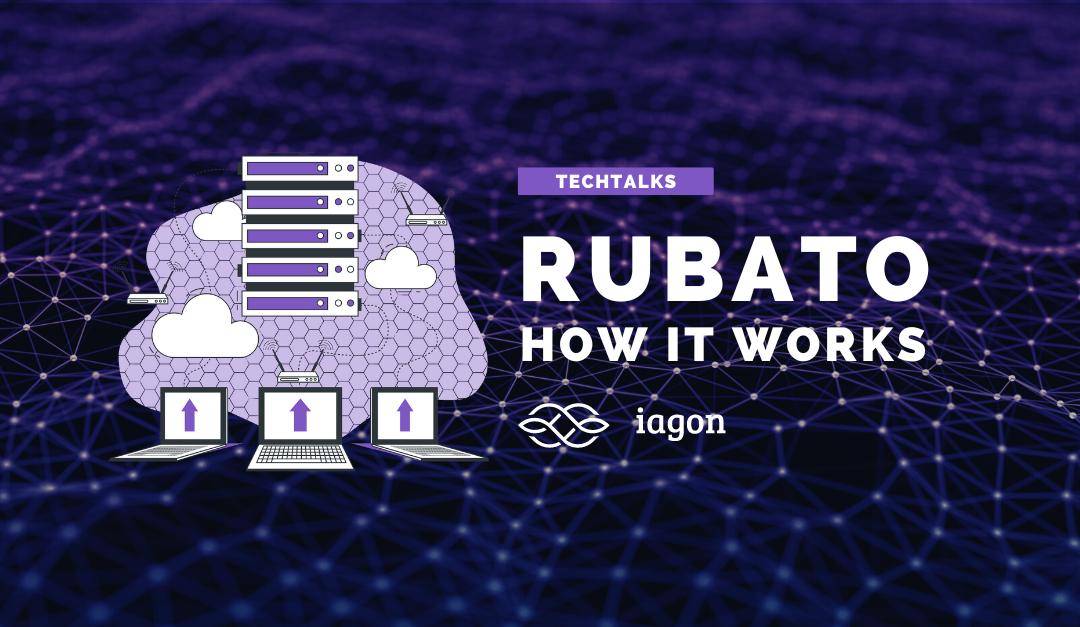It’s time for yet another part of the TechTalks series aimed at explaining the technical aspects of Iagon’s shared storage platform. In this article, we will elaborate on Fermato, a part of our high-level architecture. The purpose of this protocol component is to make it possible for storage consumers to purchase and manage storage space on the Iagon’s decentralized network.
In short, Fermato allows storage consumers to communicate with relevant smart contracts deployed on the Cardano blockchain. This way, they can subscribe for storage as a service on Iagon’s platform and manage all their subscriptions later on. In the future, we will also implement a feature responsible for access privileges settings.
The Mechanics
If we take a closer look at the architecture, it turns out that Fermato is basically a subscription manager acting as an intermediary between consumers and the marketplace.
To use Iagon’s storage service, a customer has to interact with our web interface. They define the parameters, i.e. how much space they need and for how long they want to use it. If necessary, specific storage locations can be chosen to comply with GDPR or other data privacy regulations.
The validator layer component checks the network, searching for storage nodes that fulfill the requirements. Once the nodes are selected, the network performance explorer we’ve described in the article about Adagio evaluates their performance records. Service rates are established based on the performance scores as well as on current supply and demand. Once the calculations are done, the rates are relayed to Fermato.
At this moment the protocol sends the processed subscription details to the consumer. Once the consumer accepts the offer and signs the transaction, Fermato locks rewards for the providers and generates a subscription NFT.

Step by step
The whole process can be broken down into 7 steps:
- Storage consumers specify how much storage they want to purchase. This is done over the web interface. The requirements are analyzed by the protocol and storage nodes that fulfill those requirements are selected.
- Fermato sends a query regarding the price of storage in the marketplace. Performance explorer evaluates the parameters of the chosen storage nodes.
- The marketplace analyzes the query and responds to it. Subscription prices are expressed in stablecoins and depend on the supply and demand of storage space on the market. The transaction fees are calculated in this stage as well. However, these fees are expressed in ADA.
- In this step, the storage consumer is prompted by Fermato to accept the fees. If the consumer is satisfied with the price, they can use their wallet to proceed with the payment.
- Once the transaction is signed, quoted amounts of stablecoins and ADA tokens are transferred from the customer’s wallet to Fermato.
- Fermato processes the payment. As explained above, the fee for the transaction handling is charged in ADA. The stablecoins will cover the amounts reserved in the marketplace by Adagio.
- Finally, Fermato generates a subscription proof NFT and sends the details to the storage consumer’s wallet. The process is completed, and the consumer can now upload their data. The files are encoded, encrypted, sharded, and distributed across the decentralized network of storage nodes.
Up Next
Hopefully, the article’s helped you get a deeper sense of how Iagon’s subscription mechanism works. We’ve still got a few more component descriptions up our sleeves so stay tuned. Our team is taking care of the platform to make sure Iagon delivers an excellent product.
If you’ve still got some questions about our high-level architecture or other elements of Iagon’s shared storage economy, you will surely find answers in our whitepaper.




